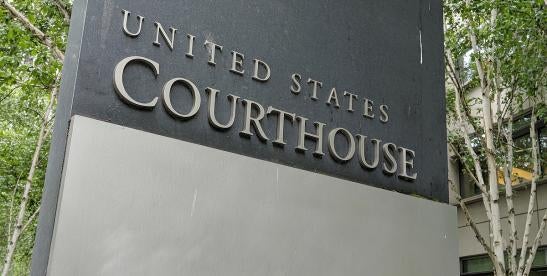In a precedential opinion issued on April 11, 2024 in Salix Pharmaceuticals, Ltd. v. Norwich Pharmaceuticals Inc., Nos. 22-2153, 23-1952, the U.S. Court of Appeals for the Federal Circuit affirmed the U.S. District Court for the District of Delaware’s decision holding claims directed to polymorphic form “β” of rifaximin invalid as obvious. The court also denied Norwich’s motion to modify the judgment below enjoining FDA from approving Norwich’s ANDA based on a post-judgment amendment carving out an infringing use.
Takeaways for Practitioners
- The Federal Circuit focused on the facts of the case, and in doing so did not overrule or criticize its prior decisions declining to find polymorph claims obvious due to the general unpredictability of chemical polymorphism and resulting lack of reasonable expectation of success in producing a claimed crystalline form in those cases, namely Grunenthal GMBH v. Alkem Laboratories Ltd., 919 F.3d 1333 (Fed. Cir. 2019) and Pharmacyclics LLC v. Alvogen, Inc., No. 2021-2270, 2022 WL 16943006 (Fed. Cir. Nov. 15, 2022).
- The court’s determination that these particular polymorph claims would have been obvious shows that with prior art examples disclosing processes that produce the subsequently claimed crystal form and competent expert testimony helping to establish a reasonable expectation of success, a defendant accused of infringing polymorph patents may be able to successfully challenge the validity of those claims, even where the claimed crystal form was not characterized in the prior art. The likelihood of succeeding on such arguments will largely depend on the factual record.
- ANDA applicants considering whether or not to carve out an indication under 21 U.S.C. § 355(j)(2)(A)(viii) (i.e., a “skinny label”) should be aware that an unsuccessful Paragraph IV challenge to validity or infringement under a full label may, as a practical matter, bar a later post-judgment attempt to carve out the unsuccessfully challenged indication to circumvent an injunction against FDA approval of the ANDA product running until expiration of the patent(s) protecting the indication.
Procedural History of the Dispute
Plaintiff Salix makes the antibiotic drug Xifaxan® (rifaximin). FDA has approved Xifaxan® for use in treatment of travelers’ diarrhea, hepatic encephalopathy (“HE”), and irritable bowel syndrome with diarrhea (“IBS-D”). Defendant Norwich filed an Abbreviated New Drug Application (“ANDA”) to market a generic version of rifaximin and certified pursuant to 21 U.S.C. § 355(j)(2)(vii)(IV) (“Paragraph IV”) that Salix’s patents listed in the Orange Book for Xifaxan® are invalid or would not be infringed by Norwich’s ANDA product. Salix filed a patent infringement suit pursuant to the Hatch-Waxman Act.
At the time of trial, Salix asserted that Norwich’s ANDA product infringed three groups of patents with claims directed to rifaximin polymorphic form β, methods of treating HE, and methods of treating IBS-D. Following a bench trial, Judge Richard G. Andrews of the District of Delaware held that Norwich’s ANDA product would infringe claims from all three groups of asserted patents, but further held that the polymorph and IBS-D patent claims were invalid as obvious. Accordingly, Judge Andrews enjoined FDA from approving Norwich’s ANDA before the expiration of the last to expire HE method of treatment patent, October 2029.
Shortly after the district court’s judgment, Norwich amended its ANDA to withdraw its Paragraph IV certifications to the HE method patents and carve out, or “skinny label,” under 21 U.S.C. § 355(j)(2)(A)(viii), the HE indication. Norwich then moved to modify the judgment under Federal Rule of Civil Procedure 60(b) to strike the portion prohibiting approval of the ANDA product until expiration of the last HE patent. Norwich argued that approval of its amended ANDA would no longer be blocked by any valid patents covering a patented use of the ANDA product. The district court denied Norwich’s motion.
Salix appealed the polymorph and IBS-D patents’ invalidity holdings, and Norwich cross appealed denial of its Rule 60(b) motion. The Federal Circuit affirmed on all issues.
Rifaximin Polymorph Patents Affirmed Invalid as Obvious
The district court held the challenged polymorph patent claims invalid as obvious based on the prior art disclosure of rifaximin preparation protocols and solvent systems that would have yielded the claimed β form, according to expert testimony introduced at trial. While the prior art did not characterize the crystal structure of the rifaximin obtained from the disclosed preparation procedure, the Federal Circuit did not disturb the lower court’s conclusions that “routine characterization” experiments could have been performed over the course of a day and would have detected rifaximin form β. The Federal Circuit also observed that Salix did not dispute that there would have been motivation to explore potential polymorphs of rifaximin, a known compound with a known useful activity, and that form β is commonly produced and is the most stable form of rifaximin.
In affirming the obviousness finding based on these unique facts, the court distinguished two of its prior cases affirming determinations below that challenged polymorph claims were nonobvious (Grunenthal and Pharmacyclics). The court noted that the primary issue in those chases was “whether a skilled artisan would have had a reasonable expectation of success in producing a crystalline form of a compound.” In contrast, the rifaximin “dispute centered around characterizing the crystalline form resulting from that [prior art] process.” The court also made clear that “we do not hold there is always a reasonable expectation of success in accessing or characterizing polymorphs,” and affirmed the lower court’s factual finding of a reasonable expectation of success in obtaining and characterizing the β-form based on the facts at hand. Thus, the Federal Circuit was careful to explain why this case was different from its prior ones that largely aligned with district court decisions upholding polymorph patents as nonobvious.
Injunction Against FDA Approving ANDA and Rule 60(b) Motion Denial Affirmed
The Federal Circuit next affirmed the district court’s order against FDA approval of the ANDA until expiration of the last-to-expire HE patents found to be infringed. In so doing, it rejected Norwich’s argument that restriction on FDA approval of an ANDA under 35 U.S.C. § 271(e)(4)(A) should be tied to the specific indication for which an ANDA seeks approval. Rather, the court held that the relevant infringement under the Hatch-Waxman statutory scheme is the submission of the ANDA that included an infringing use. The fact that the ANDA may have recited a non-patent-protected indication does not negate a finding that the ANDA submission at issue infringed one or more asserted patents. Thus, the court affirmed the injunction against approval of the ANDA itself, not tied to any particular indication, including the subsequently carved out HE indication.
Finally, the Federal Circuit affirmed the district court’s denial of Norwich’s Rule 60(b) motion to modify its final judgment against ANDA approval in light of Norwich’s post-judgment ANDA labeling amendment carving out of the HE indication. The appeals court agreed with the district court that determining whether the patented HE indication carve out successfully turned infringement into noninfringement is not a simple matter, and would essentially require a second litigation following final judgment. Thus, the Federal Circuit ruled that the district court did not abuse its discretion in denying Norwich’s Rule 60(b) motion.
While the skinny label determination was significant to the timing of approval of Norwich’s ANDA, the more significant aspect of this decision is the finding and affirmance that claims directed to specific polymorph crystal forms were invalid as obvious – here, because one skilled in the art would have had a reasonable expectation of success in accessing or characterizing those polymorphs from the prior art of record.







 i
i

